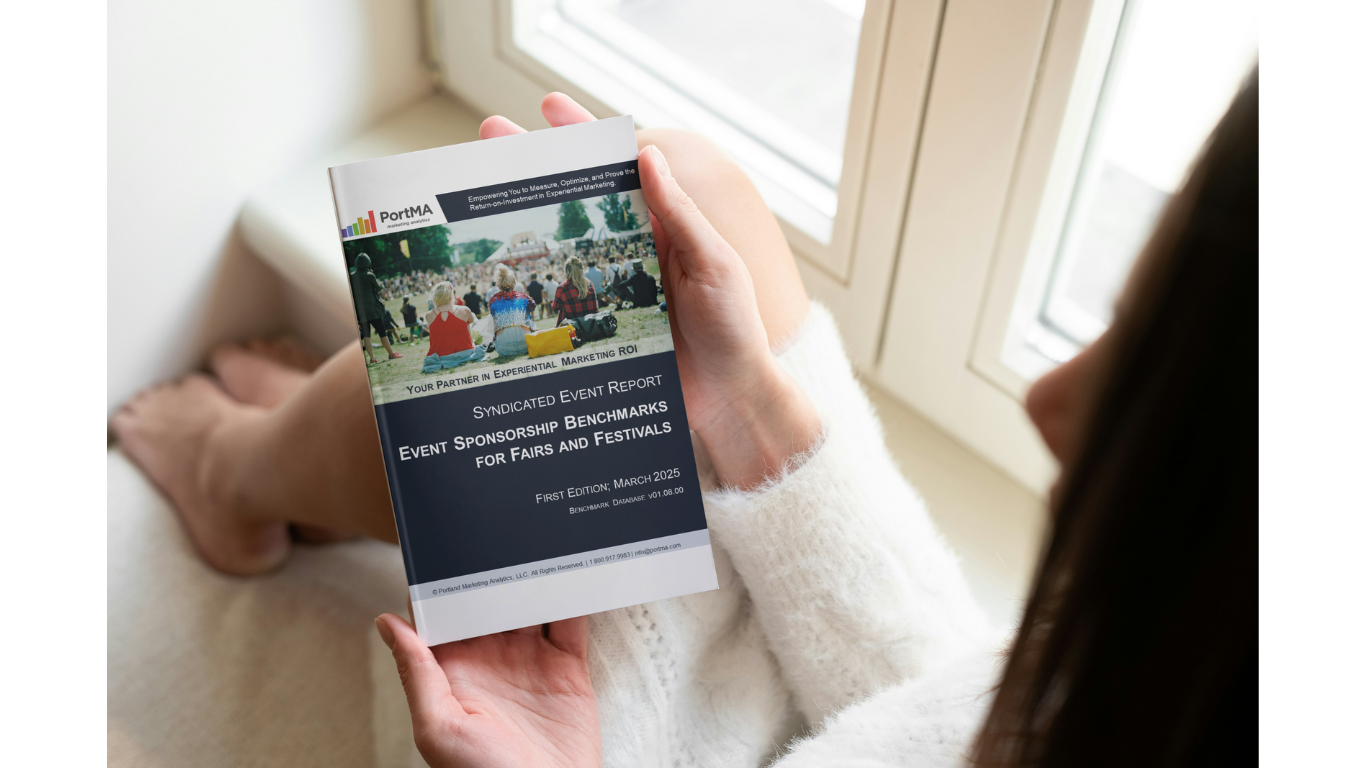
When it comes to experiential marketing, one challenge consistently rises to the top: proving ROI.
How do we quantify the lasting impact of those meaningful brand interactions?
That is where Customer Lifetime Value (CLV) comes in; a metric that bridges the gap between today’s engagement and long-term revenue potential.
But any Brand Manager will tell you that CLV isn’t just about numbers; it’s about understanding the complete narrative of customer relationships.
Let me share how this insight can transform your approach to experiential marketing.

Download Your Free Sample Report & Benchmark Your Sponsorship ROI
See how top brands measure sponsorship success. This sample report gives you a sneak peek into industry benchmarks, helping you optimize your sponsorship strategy and justify budgets with data.
Estimated reading time: 5 minutes
Table of Contents
- Download Your Free Sample Report & Benchmark Your Sponsorship ROI
- What’s CLV and Why Should You Care?
- Real-World Challenges in CLV Calculation
- Four Steps for the Experiential Marketer to Calculate Lifetime Value
- CLV’s Strategic Impact on ROI
- Transforming Experiential Marketing with CLV Insights
- Starting Your CLV Journey
- Putting CLV to Work
What’s CLV and Why Should You Care?
Think of Customer Lifetime Value as your strategic compass for ROI.
It represents the total value a customer brings to your brand throughout your relationship. For experiential marketers, it’s particularly valuable because it connects those memorable brand moments to tangible business outcomes.
Consider this practical example: A customer making quarterly purchases at $12 each generates $48 in annual value. Factor in retention rates over time, and you begin to see how initial touchpoints create compounding value.
Real-World Challenges in CLV Calculation
While CLV provides valuable insights, three key challenges often emerge:
- Data Accessibility: Many brands consider CLV metrics confidential, making it challenging to gather comprehensive data for analysis.
- Customer Evolution: Shopping patterns and brand loyalty naturally shift over time, requiring regular updates to CLV projections.
- Retention Reality: Customer engagement typically decreases over time. Understanding this pattern helps set realistic growth expectations.
Four Steps for the Experiential Marketer to Calculate Lifetime Value
Let me share a practical framework for calculating CLV that I’ve refined through years of experience:
1. Begin with Retention Reality
Start with actual retention data. If you’re following PortMA’s RIV Paradigm Methodology, this can be as simple as examining the future purchase intentions of current customers and then applying them to your CVL estimate.
For example, if existing customers report 45% future purchase intention after accounting for overestimating, and your conversion rates result in 100 new customers, you’ll have 45 customers in year two.
This honest assessment forms the foundation for accurate planning.
2. Map Purchase Patterns
Every industry has its natural buying cycle. Understanding these patterns, whether daily essentials or occasional investments, leads to more accurate projections. If you don’t know these purchase cycles, PortMA’s ROI Toolkit provides the recommended AI prompts.
Expert Tip: Use Perplexity, review the citations, and select a credible industry reference.
3. Calculate True Annual Value
Move beyond averages by examining actual purchase behavior. Consider how different customer segments might show varying patterns of engagement and value.
4. Project Long-term Impact
Using PortMA’s CLV Calculator (or your spreadsheet), take 100% of new customer value in year 1 but reduce it in year 2, year 3, and beyond accordingly until all original new customers have dropped out of the brand relationship due to natural attrition.
Let us guide you through using the PortMA CLV Calculator.
Click below to schedule a call, where we’ll share our screen and enter your industry- or campaign-specific details. We’ll utilize real-time customer loyalty benchmarks and display the estimated Customer Lifetime Value (CLV) for your experiential campaign.
Guided Access to PortMA’s CLV Calculator for Experiential Marketers
CLV’s Strategic Impact on ROI
Incorporating CLV into your calculations provides a comprehensive view of campaign performance.
It translates experiential marketing efforts into the financial metrics that resonate with leadership teams, while offering a clear way to benchmark against other marketing channels.
Transforming Experiential Marketing with CLV Insights
Here are three ways CLV has revolutionized experiential marketing measurement:
- Concrete ROI Demonstration: CLV transforms abstract engagement metrics into tangible financial projections, helping justify activation investments.
- Strategic Decision-Making: Understanding true customer value often reveals that seemingly expensive initiatives become worthwhile investments when viewed through a long-term lens.
- Competitive Intelligence: Retention patterns offer valuable insights into brand health and market position relative to industry standards.
Starting Your CLV Journey
Begin with your existing data – CRM information, sales data, and retention figures.
Many successful teams start with basic spreadsheet analysis before moving to more sophisticated tools.
Putting CLV to Work
After years of implementing CLV tracking across various brands, we’ve learned that success lies not in perfect forecasting, but in making more informed decisions. Understanding your customers’ journey – from initial engagement through ongoing relationship – enables you to create more meaningful experiences.
CLV serves as a powerful lens for viewing the complete impact of experiential marketing.
When teams share these insights collaboratively, we create experiences that not only capture attention today but build lasting customer relationships.

Download Free Sample Report Today to access comprehensive insights and boost your sponsorship ROI.
Click to Read More and Download